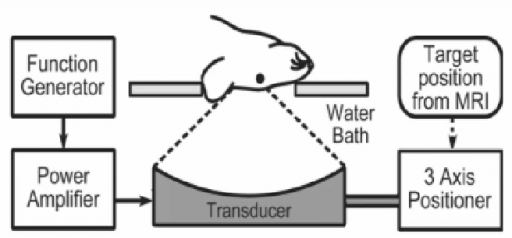Bypassing the blood-brain barrier with MRI and ultrasound
March 15, 2012
Researchers at Sunnybrook Research Institute at the University of Toronto have used an MRI machine to guide the use of microbubbles and focused ultrasound to help drugs enter the brain.
The research may open new treatment avenues for devastating conditions like Alzheimer’s and brain cancers.
“It’s getting close to the point where this could be done safely in humans,” said Meaghan O’Reilly, an imaging researcher at Sunnybrook Research Institute.
The current method of disrupting the blood-brain barrier (BBB) is by using osmotic agents such as mannitol, which suck the water out of the cells that form the barrier, causing the gaps between them to get bigger. Unfortunately, this method opens large areas of the barrier, leaving the brain exposed to toxins.
The benefit of the microbubble technique is that it can be used on a very small area of the BBB. The microbubbles, made of lipids (fats) and gas, are injected into the bloodstream. When focused ultrasound is applied, the bubbles expand and contract. It is thought that the force of the movement in the bubbles causes the cells that form the BBB to temporarily separate, which allows drugs to reach the brain.
O’Reilly and her colleagues use the MRI machine to provide targeting information to a three-axis positioning system, to ensure that the barrier opens, and time how long it takes for it to close, which will be important for when the technique is used on patients.
Ref.: Meaghan A. O’Reilly, et al., MRI-guided Disruption of the Blood-brain Barrier using Transcranial Focused Ultrasound in a Rat Model, JoVE, 2012; [DOI:10.3791/3555]
JoVE is a peer-reviewed, PubMed-indexed science journal that publishes all of its content in both text and video format.


